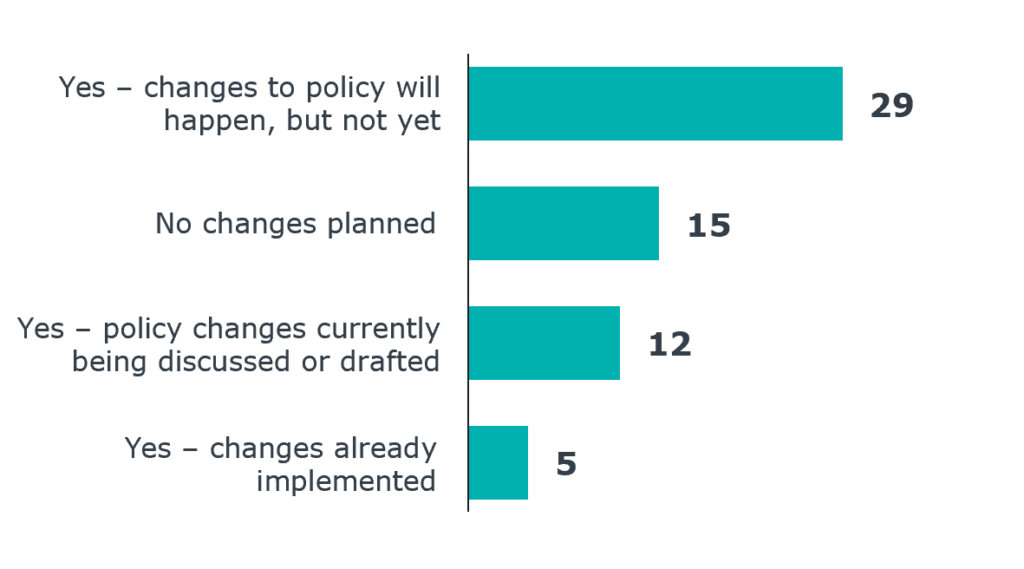How higher ed leaders are adapting office space for hybrid work
As college and university leaders start to plan for a post-pandemic world, many are starting to think about ways to adapt their on-campus office space to better align with hybrid work, especially for administrative and professional services staff.
To help campus leaders rethink office spaces, we’ve outlined three insights based on our recent conversations with chief business officers and senior Facilities officers. See below for the takeaways or jump to the next steps to learn how EAB can support you and your campus in implementation.
Review the key takeaways
Institutions are taking a range of approaches to recalibrate campus office spaces based on their long-term hybrid work plans and space savings goals
For example, some institutions are consolidating administrative units to reduce their office space footprint. Others are testing flexible workspaces as part of their remote work pilots or renovating existing offices to better meet hybrid employees’ on-campus space needs. When selecting an approach, campus leaders should weigh the logistical complexity and upfront investment required with the anticipated space savings and workforce benefits for their institution.
-
Smaller scale, less complex: Unit consolidation and relocation
- Admin units reduce their footprint by sharing office buildings, floors
- Units vacate central campus space so it can be used for mission-centric activities
-
Medium scale and complexity: Workspace pilot program
- Short-term initiative to gather info and data on employees’ office space needs, utilization
- Institutions test flexible workspace designs
-
Large scale, more complex: Campus-wide transformation
- Comprehensive effort to increase efficiencies, cost savings, employee satisfaction
- Institutions replace existing admin offices with agile workspaces
Campus leaders hope to leverage hybrid work to make long-term improvements to space management and utilization
During the pandemic, remote operations elevated the importance of effective space management and convinced many staff and faculty that their private, on-campus offices are not critical for completing most of their work. As a result, many campus leaders are hoping to build on this momentum to make better use of existing campus space going forward. For example, 75% are planning to update their institutional space allocation and utilization policies in the next year. Some are also considering incentivizing faculty to permanently give up underutilized private offices.
Survey results: Are you planning to make changes to your space allocation or utilization policies in the next year?
n=61

When redesigning administrative offices, institutions are creating a mix of flexible and shared workspaces for hybrid staff
With fewer staff coming to campus for work every day, campus leaders have an opportunity to increase space efficiencies by creating shared workstations for employees to temporarily use when in the office. But since hybrid employees will only spend a fraction of their time on campus working independently at a desk, some institutions are incorporating a range of other spaces (e.g., huddle rooms, conference rooms, call rooms) into redesigned offices. This allows hybrid employees to choose the space that best supports their work and productivity.
-
78%
of facilities leaders think staff on their campus would willingly trade assigned seating for increased working flexibility
-
51%
of business and facilities leaders are planning to incorporate hoteling or hot-desking into renovated office spaces
Take the next steps
-
Share summary slides
This resource requires EAB partnership access to view.
Access the research report
Learn how you can get access to this resource as well as hands-on support from our experts through Strategic Advisory Services.
Learn More